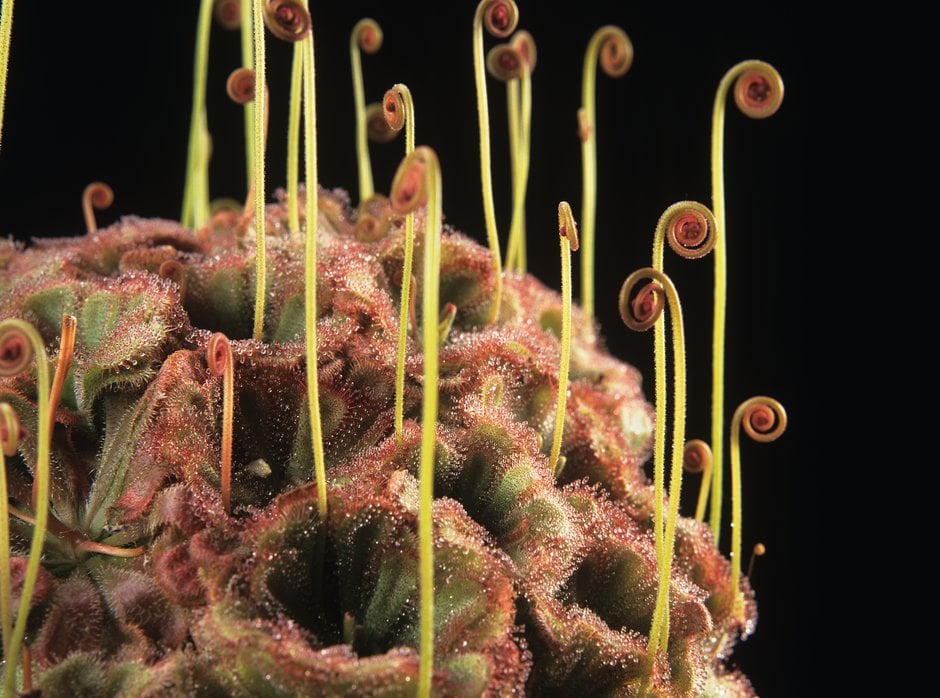Drosera aliciae
Princess Alice's sundew
Drosera aliciae is a perennial carnivorous plant producing spoon-shaped leaves, up to 25 mm long and 7 mm wide, which are tightly packed to form a dense, clumping basal rosette, when mature, often forming a mound, 1.5–4 cm (½ -1½ in) high, as a result of the build up of older dead basal leaves. Leaves are green, assuming an orange, to reddish hue in high light and the upper surfaces are covered with red, sticky, glandular hairs, which trap and digest insect prey. A single inflorescence to 4cm (1½ in)in height is produced in summer, bearing 2-12 single flowers in deep pink, opening in ascending order
Size
Ultimate height
Up to 10cmTime to ultimate height
1–2 yearsUltimate spread
0.1–0.5 metresGrowing conditions
Moisture
Poorly–drainedpH
AcidColour & scent
| Stem | Flower | Foliage | Fruit | |
| Spring | Green Orange Red | |||
|---|---|---|---|---|
| Summer | Pink | Green Orange Red | ||
| Autumn | Green Orange Red | |||
| Winter | Green Orange Red |
Position
- Full sun
Aspect
West–facing or South–facing
Exposure
Sheltered Hardiness
H3Botanical details
- Family
- Droseraceae
- Native to GB / Ireland
- No
- Foliage
- Evergreen
- Habit
- Matforming
- Genus
Drosera, commonly known as the sundews are one of the largest genera of carnivorous plants. They are perennial or (more rarely) annual, upright herbaceous plants forming either prostrate or upright rosettes, and can live for up to 50 years.
- Name status
Unresolved
- Plant range
- S Africa (Cape)
How to grow
Cultivation
Under glass grow in a mix of equal parts fertiliser-free peat substitute and sand, in full light, although may need shading from hot midday sun in summer. The compost should be kept continually moist to wet during the growing season by standing the container in a tray of lime-free water, such as rainwater or Reverse Osmosis water. Keep just moist during the winter and do not stand the plants in water. Do not apply fertiliser at all through the year. Minimum temperatures should be no lower than 10C in the winter. In lower temperatures the plant may die back to the roots, but sometimes regenerates again in the spring. For further information see Carnivorous plant cultivation
Propagation
Propagate by seed as soon as ripe. Stored seed rapidly loses viability. Leaf cuttings during the growing season and root cuttings taken when dormant are alternative methods of propagation
Suggested planting locations and garden types
- Patio and container plants
- Sub-tropical
Pruning
No pruning required
Pests
Generally pest-free
Diseases
Generally disease-free
Love gardening
Sign up to receive regular gardening tips, inspiration, offers and more
View our Privacy Policy
Get involved
The Royal Horticultural Society is the UK’s leading gardening charity. We aim to enrich everyone’s life through plants, and make the UK a greener and more beautiful place.
